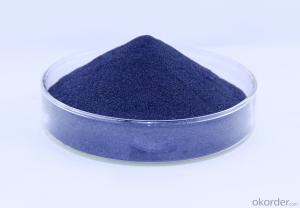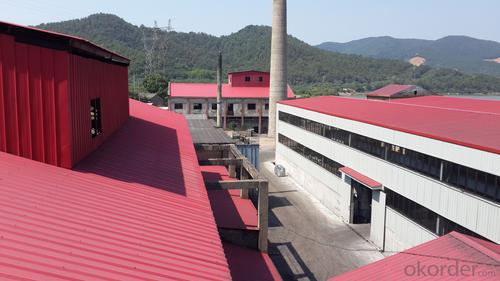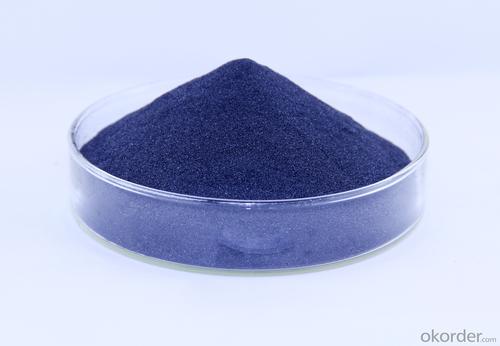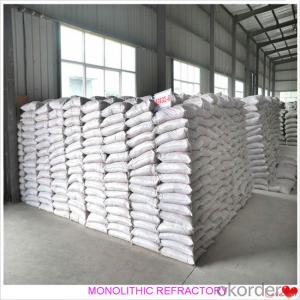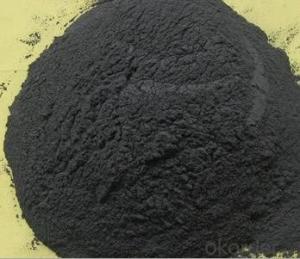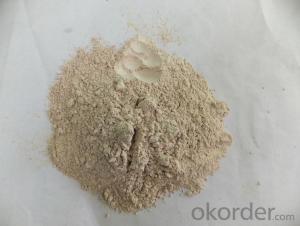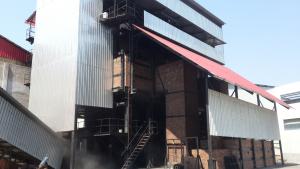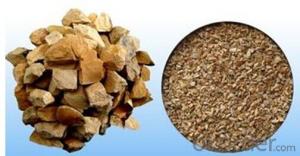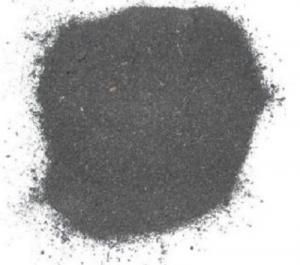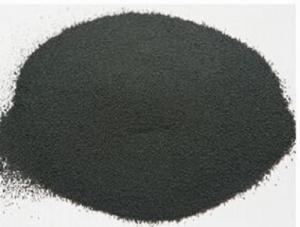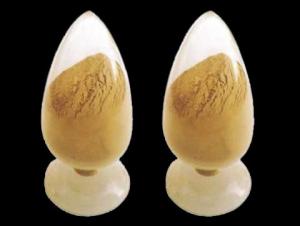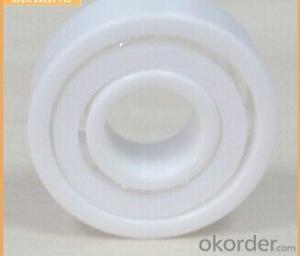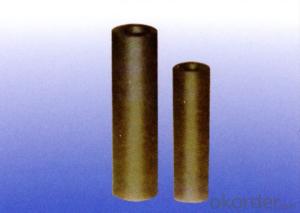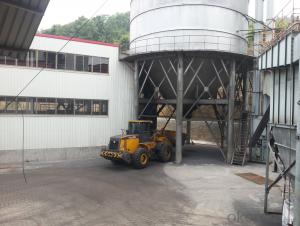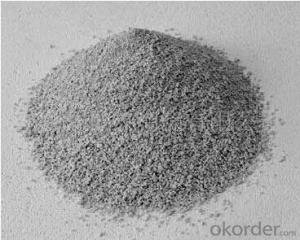Monolithic Refractories for Iron and Steel Industry - Raw Carbon Material Made by Carbon Filler
- Loading Port:
- China main port
- Payment Terms:
- TT or LC
- Min Order Qty:
- 20 m.t
- Supply Capability:
- 1000 m.t/month
OKorder Service Pledge
OKorder Financial Service
You Might Also Like
Calcined Petroleum Coke
FC:98.5%min,
S:0.5%max
A:0.8%max
V:0.7%max
Mositure:0.5%max
Size:1-5mm
Technology:
Laborary Equpment
In our lab,we has a high precision balance,mullfe furnace,sample making machine, dring box,sulfur measurement instrument and other calibratiing equipments.As a result,before deliverung to our customers,our products have to pass a strict test to ensure the quality and components.The testing reports will be sent to our customers to confirm untill they satisfy with it.
Packaging & Delivery
Packaging Detail:25kg paper bag into 1t weaving bag 5kg, 10kg and 20kg weaving bag into 1t weaving bag 25kg weaving bag put on pallet covered with entanglement wrap product direct into packing bag 25kg paper bag put on pallet covered with entanglement Wrap 25kg weaving bag into 1t weaving bag.
Delivery Details: 7 days
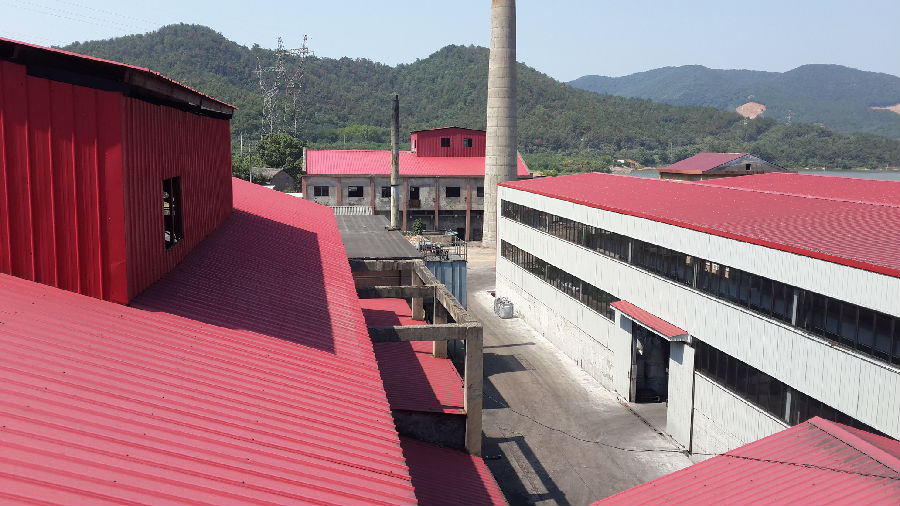
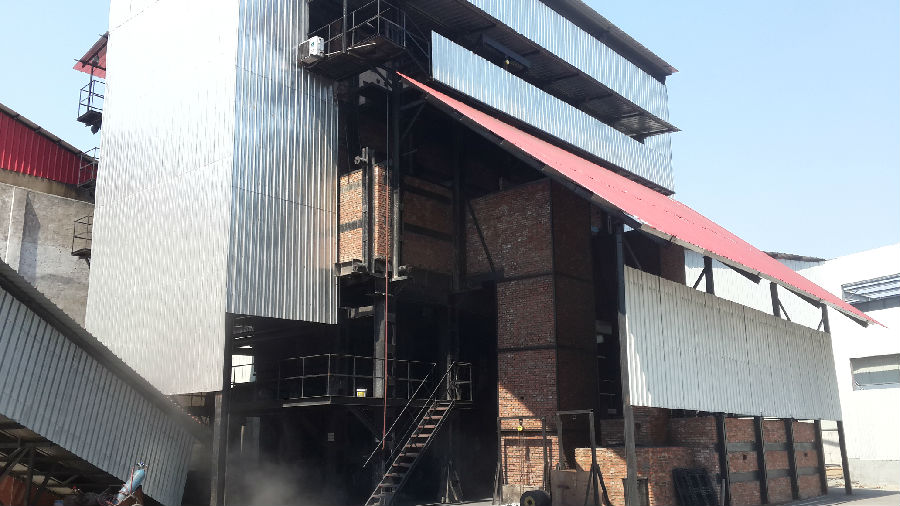
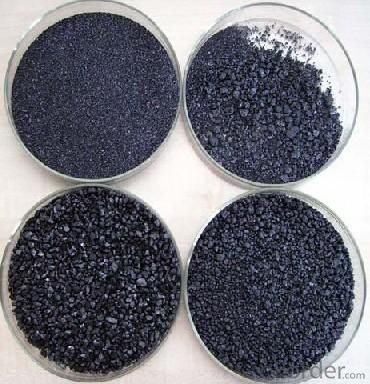
Factory Background
The factory is majorly running and operating carbon additive (pitch coke, calcined petroleum coke and anthracite), low nitrogen carbon additive, and brake pad making material. Company is the long term supplier of Sinosteel Corporation, Shanghai Carbon Corporation, the plant of SGL Group the Carbon Company in China and some largest special carbon products producing plants.
YUAI also supplies huge amout of high quality carbon additive and graphite carbon additive to steel plants, foundries and ferrotungsten plants. YUAI has been assigned by BAO STEEL as the only organization for processing pitch coke for export purpose. The group’s major products are constantly exported to Japan, Korea, Malaysia, South East Asia countries, Europe and America, which receive praises by our consumers.
The group has invested numbers of calcinators in Anhui China to ensure the capability of producing and processing huge amount of carbon additive. Further investment is on process. According to the orders from customers, YUAI is able to processing and providing different specifications of carbon additive and other products. To provide best quality of products and to offer customers most satisfied service is YUAI’s operating objectives.
Our Service:
1. Your inquiry related to our products or prices will be replied in 24hours.
2. Manufacturer with large capacity, ensure the fast production cycle after confirmed the order.
3. Our professional technicians will answer your entire enquiry in patient.
4. To meet the refractory solutions, we can serve as your instructions.
5. Protection of sales area and private information for our entire customer.
If you’ve kind enquiries, please don’t hesitate to let us know. ^_^
- Q: What are the advantages of using castables in the iron and steel industry?
- There are several advantages of using castables in the iron and steel industry. Firstly, castables offer excellent thermal shock resistance, allowing them to withstand sudden temperature changes during the manufacturing process. This helps to prevent cracking and prolongs the lifespan of the refractory lining. Secondly, castables provide high strength and abrasion resistance, making them suitable for withstanding the harsh conditions of iron and steel production. They can withstand the abrasive nature of molten metal and slag, ensuring long-lasting performance. Additionally, castables offer flexibility in terms of installation. They can be poured or gunned into place, allowing for easy and efficient lining of various shapes and sizes. This flexibility also helps in repairs and maintenance, as damaged areas can be easily patched up. Lastly, castables have good chemical resistance, enabling them to withstand the corrosive effects of molten metal and various metallurgical processes. This resistance helps to maintain the integrity of the refractory lining and ensures consistent production quality. Overall, the advantages of using castables in the iron and steel industry include thermal shock resistance, high strength, abrasion resistance, flexibility in installation, and chemical resistance. These properties contribute to improved efficiency, extended refractory life, and reduced downtime, ultimately benefiting the overall productivity of the industry.
- Q: How do monolithic refractories resist corrosion from molten metals?
- Monolithic refractories resist corrosion from molten metals due to their inherent chemical composition and physical properties. These refractories are made using high-quality materials that possess excellent resistance to chemical attack and high temperatures. They are designed to have a dense and compact structure, which helps in preventing the penetration of molten metals and minimizing the reaction between the refractory and the metal. Additionally, monolithic refractories often contain additives or binders that enhance their resistance to corrosion, making them highly effective in withstanding the aggressive nature of molten metals.
- Q: What are the advancements in monolithic refractory technology for the iron and steel industry?
- There have been several advancements in monolithic refractory technology for the iron and steel industry. One significant advancement is the development of low-cement castables, which have improved high-temperature strength, thermal shock resistance, and erosion resistance compared to conventional castables. Another advancement is the introduction of ultra-low cement castables, which offer even higher strength and improved resistance to spalling and alkali attacks. Additionally, the use of advanced bonding systems and additives has led to the development of self-flowing castables, making installation easier and more efficient. These advancements have greatly improved the performance and longevity of refractory linings in iron and steel industry applications.
- Q: How do monolithic refractories contribute to the overall productivity of iron and steel production?
- Monolithic refractories play a crucial role in enhancing the overall productivity of iron and steel production. These refractories are widely used in various applications such as furnaces, ladles, and tundishes, offering excellent thermal stability and resistance to chemical attacks. By providing a durable lining, monolithic refractories ensure longer campaigns and reduced downtime for repairs and maintenance. This leads to increased production efficiency, reduced energy consumption, and improved product quality, ultimately contributing to the overall productivity of iron and steel production.
- Q: How do monolithic refractories respond to changes in thermal conditions?
- Monolithic refractories have the ability to withstand and adapt to changes in thermal conditions. They have a high thermal shock resistance, meaning they can handle rapid changes in temperature without cracking or breaking. Additionally, they exhibit good thermal conductivity, allowing them to efficiently conduct and distribute heat. Overall, monolithic refractories demonstrate a stable and reliable response to changes in thermal conditions.
- Q: What are the main types of monolithic refractories used in the iron and steel industry?
- The main types of monolithic refractories used in the iron and steel industry are castables, plastic refractories, and ramming mixes.
- Q: How are monolithic refractories installed and repaired in iron and steel applications?
- Monolithic refractories are installed and repaired in iron and steel applications using specific procedures to ensure optimal performance and longevity. The installation process typically involves the following steps: 1. Surface preparation: The surface where the monolithic refractory will be installed needs to be properly cleaned and prepared. This includes removing any loose material, dirt, and dust. It is crucial to have a smooth and clean substrate to ensure good adherence of the refractory material. 2. Mixing the refractory material: Monolithic refractories are typically supplied as dry powders or granules that need to be mixed with water or a specific bonding agent to form a workable consistency. The mixing process should be done according to the manufacturer's instructions to achieve the desired properties of the refractory. 3. Application: The mixed refractory material is then applied to the prepared surface using various techniques such as troweling, spraying, or casting. The choice of application method depends on the specific requirements of the installation and the type of monolithic refractory being used. 4. Curing: After the refractory material is applied, it needs to be properly cured to achieve its maximum strength and durability. Curing can be done by air drying, using heat, or a combination of both, depending on the specific refractory material being used. The curing process should be carried out gradually and according to the manufacturer's recommendations. When it comes to repairs of monolithic refractories in iron and steel applications, the following steps are generally followed: 1. Assessment: The damaged area or component needs to be thoroughly assessed to determine the extent of the damage and the appropriate repair method. 2. Removal of damaged material: The damaged monolithic refractory material is carefully removed using appropriate tools and techniques. It is important to remove all the damaged material while ensuring that the underlying substrate is not further compromised. 3. Surface preparation: Similar to the installation process, the surface where the repair will be carried out needs to be properly cleaned and prepared. Any loose material, dirt, and dust should be removed to create a clean and smooth substrate. 4. Application of repair material: The repair material, which is typically the same or similar to the original monolithic refractory, is mixed and applied to the damaged area. The application method may vary depending on the nature of the repair and the specific requirements of the refractory material. 5. Curing and post-repair inspection: The repaired area should be properly cured and inspected to ensure the quality and effectiveness of the repair. Curing and inspection procedures should adhere to the manufacturer's guidelines. In summary, the installation and repair of monolithic refractories in iron and steel applications require careful surface preparation, proper mixing and application of the refractory material, and appropriate curing procedures. Following these steps in a meticulous manner ensures reliable and durable refractory linings, which are essential for the efficient operation of iron and steel processes.
- Q: What are the recommended installation techniques for monolithic refractories?
- The recommended installation techniques for monolithic refractories typically involve proper surface preparation, mixing of refractory materials, and precise application. It is crucial to clean and remove any loose debris from the substrate before installation. The refractory materials should be mixed thoroughly with the appropriate water content to achieve the desired consistency. It is recommended to use vibration or tamping techniques during application to remove air pockets and ensure proper compaction. Careful curing and drying processes should be followed to prevent thermal shock and achieve optimal performance.
- Q: How can the lifespan of monolithic refractories be extended in the iron and steel industry?
- The lifespan of monolithic refractories can be extended in the iron and steel industry through proper installation, regular maintenance, and implementing effective refractory management practices. This includes using high-quality refractory materials, ensuring precise installation techniques, monitoring and controlling operating conditions, conducting regular inspections, and promptly addressing any signs of wear or damage. Additionally, optimizing heating and cooling cycles, implementing appropriate refractory lining designs, and incorporating advanced technologies can further enhance the longevity of monolithic refractories in this industry.
- Q: How do monolithic refractories contribute to the safety of iron and steel plants?
- Monolithic refractories play a crucial role in ensuring the safety of iron and steel plants. These refractories are specially designed to withstand high temperatures, chemical attacks, and mechanical stresses commonly encountered in these industrial settings. By utilizing monolithic refractories, iron and steel plants can benefit in the following ways: 1. Thermal resistance: Monolithic refractories have excellent resistance to extreme temperatures, preventing heat loss and ensuring the efficient operation of various equipment and systems. This thermal insulation contributes to the safety of the plant by reducing the risk of overheating, which could lead to equipment failure or even catastrophic accidents. 2. Chemical resistance: Iron and steel plants involve the use of various chemicals, including molten metal, slag, and corrosive gases. Monolithic refractories exhibit high resistance to these aggressive chemical environments, preventing corrosion, erosion, and material degradation. This resistance ensures the integrity of refractory linings, reducing the risk of leaks, spills, and contamination that could jeopardize the safety of workers and the environment. 3. Structural stability: Monolithic refractories provide excellent mechanical strength, offering structural stability to the linings of furnaces, ladles, and other equipment. This stability is crucial for the safe operation of iron and steel plants, as it minimizes the risk of structural failure, collapse, or damage caused by mechanical stresses or heavy loads. 4. Rapid repair and maintenance: Monolithic refractories offer the advantage of easy installation and repair compared to traditional brick refractories. Their application involves pouring, gunning, or ramming the refractory material in place, which allows for quick repairs and maintenance. This rapid response to refractory failures or damages contributes to the plant's safety by minimizing downtime and preventing potential hazards associated with equipment malfunction. 5. Flexibility and adaptability: Monolithic refractories can be tailored to meet the specific needs and requirements of iron and steel plants. They can be customized in terms of composition, density, thermal conductivity, and other properties, allowing for optimal performance under varying operating conditions. This adaptability ensures that refractory linings are well-suited for the plant's processes, reducing the likelihood of accidents or incidents caused by inadequate refractory materials. In summary, monolithic refractories enhance the safety of iron and steel plants by providing thermal resistance, chemical resistance, structural stability, rapid repair capabilities, and flexibility. By utilizing these refractories, iron and steel plants can maintain a safe working environment, minimize the risk of accidents, and ensure the reliable operation of their equipment and systems.
Send your message to us
Monolithic Refractories for Iron and Steel Industry - Raw Carbon Material Made by Carbon Filler
- Loading Port:
- China main port
- Payment Terms:
- TT or LC
- Min Order Qty:
- 20 m.t
- Supply Capability:
- 1000 m.t/month
OKorder Service Pledge
OKorder Financial Service
Similar products
Hot products
Hot Searches
Related keywords

